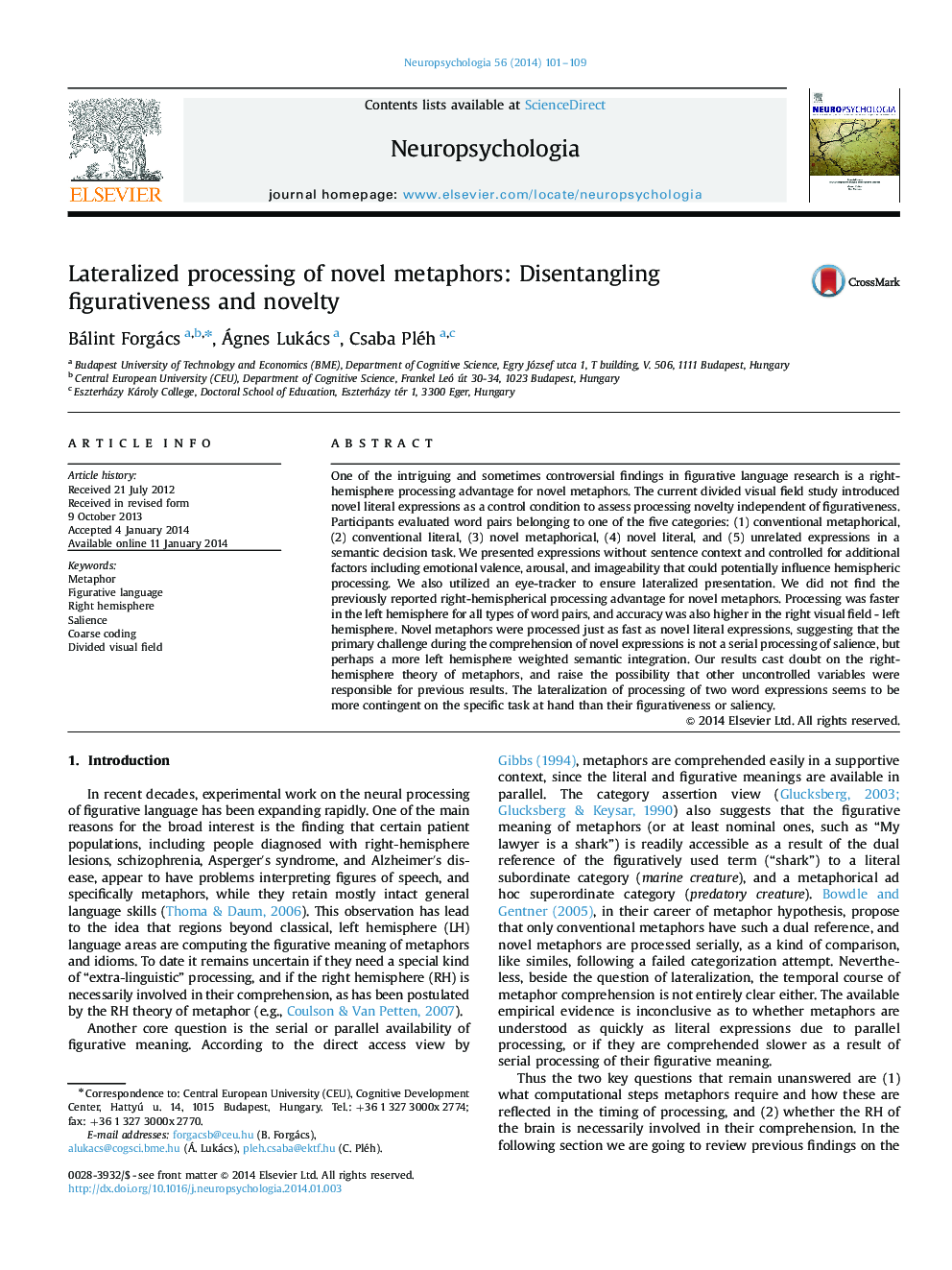| Article ID | Journal | Published Year | Pages | File Type |
|---|---|---|---|---|
| 7321540 | Neuropsychologia | 2014 | 9 Pages |
Abstract
One of the intriguing and sometimes controversial findings in figurative language research is a right-hemisphere processing advantage for novel metaphors. The current divided visual field study introduced novel literal expressions as a control condition to assess processing novelty independent of figurativeness. Participants evaluated word pairs belonging to one of the five categories: (1) conventional metaphorical, (2) conventional literal, (3) novel metaphorical, (4) novel literal, and (5) unrelated expressions in a semantic decision task. We presented expressions without sentence context and controlled for additional factors including emotional valence, arousal, and imageability that could potentially influence hemispheric processing. We also utilized an eye-tracker to ensure lateralized presentation. We did not find the previously reported right-hemispherical processing advantage for novel metaphors. Processing was faster in the left hemisphere for all types of word pairs, and accuracy was also higher in the right visual field - left hemisphere. Novel metaphors were processed just as fast as novel literal expressions, suggesting that the primary challenge during the comprehension of novel expressions is not a serial processing of salience, but perhaps a more left hemisphere weighted semantic integration. Our results cast doubt on the right-hemisphere theory of metaphors, and raise the possibility that other uncontrolled variables were responsible for previous results. The lateralization of processing of two word expressions seems to be more contingent on the specific task at hand than their figurativeness or saliency.
Related Topics
Life Sciences
Neuroscience
Behavioral Neuroscience
Authors
Bálint Forgács, Ágnes Lukács, Csaba Pléh,
